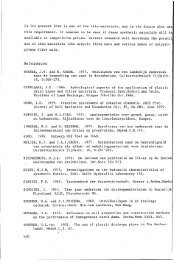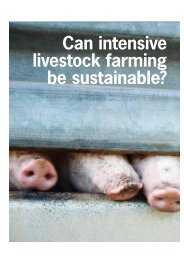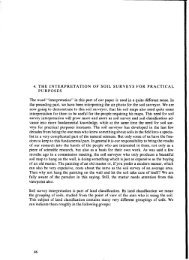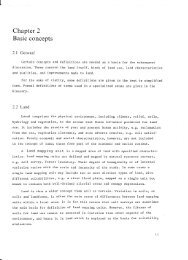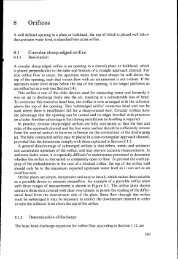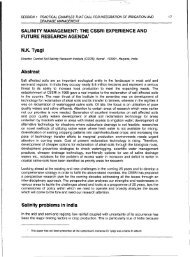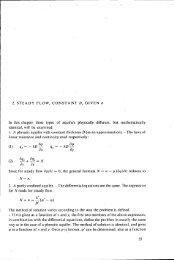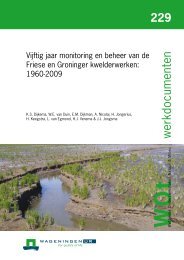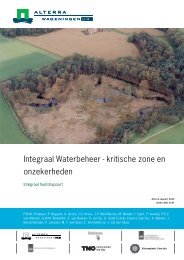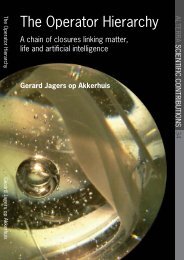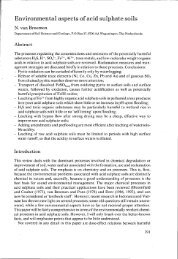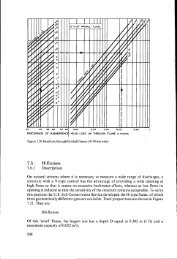SMALL-SCALE DREDGING AND DESILTING EQUIPMENT
SMALL-SCALE DREDGING AND DESILTING EQUIPMENT
SMALL-SCALE DREDGING AND DESILTING EQUIPMENT
Create successful ePaper yourself
Turn your PDF publications into a flip-book with our unique Google optimized e-Paper software.
F.C. HAMSTER & M. JURRIENS 85DEVELOPMENT OF A CANALMAINTENANCE POLICY1. INTRODUCTIONIn earlier papers the Dutch institution of the "Waterboard" has been discussed.The present paper deals with the development of a new maintenance plan whichbecame necessary after a merger was planned of two adjacent Waterboards,which was implemented from 1-1-1992.Both Waterboards were situated in the upper Northeast part of the Netherlands.The former Waterboard "De Veenmarken" covered some 27.000 ha and theWaterboard " Reiderzijlvest" about 65.000 ha; the new combined Waterboard"Dollardzijlvest" (DZV) will thus cover some 92.000 ha.The larger part of this Waterboard (50.000 ha) is a former peat colony, whichwas reclaimed from 150 till 50 years ago. The peat from the high moor wasused for the heating of houses and for industrial use. Local people built asystem of canals and branches for the water control and the transport of thepeat. Nowadays it is an agriculture area, with potatoes as main product for theproduction of starch. The remaining part of the Waterboard area can be dividedinto sandy soil and clay polders near the sea. The entire Waterboard area@ZV) is in fact one water management system, ultimately draining on the"Dollard", an estuary of the North Sea.The principal task of both old and new Waterboards is water management,which eventually implies taking all necessary measures needed to regulate thewater flows and levels in the canals for the benefit of agricultural and pastureland, but also for nature reserves and built-up areas. The basic task not onlyconcerns the operation of the system, and incidental design and construction ofnew works, but the maintenance of the systems as well.For the situation after the merger of the two Waterboards, a new maintenanceplan had to be developed, because both Waterboards had a different policy ofmaintenance and equipment. The merger also evoked the need to adapt theorganization. At the same time there is a land consolidation (reallotment)program taking place in the entire area, which offers the possibility to improvemaintenance facilities.For the development of such plan, the following major questions are to beaddressed:



